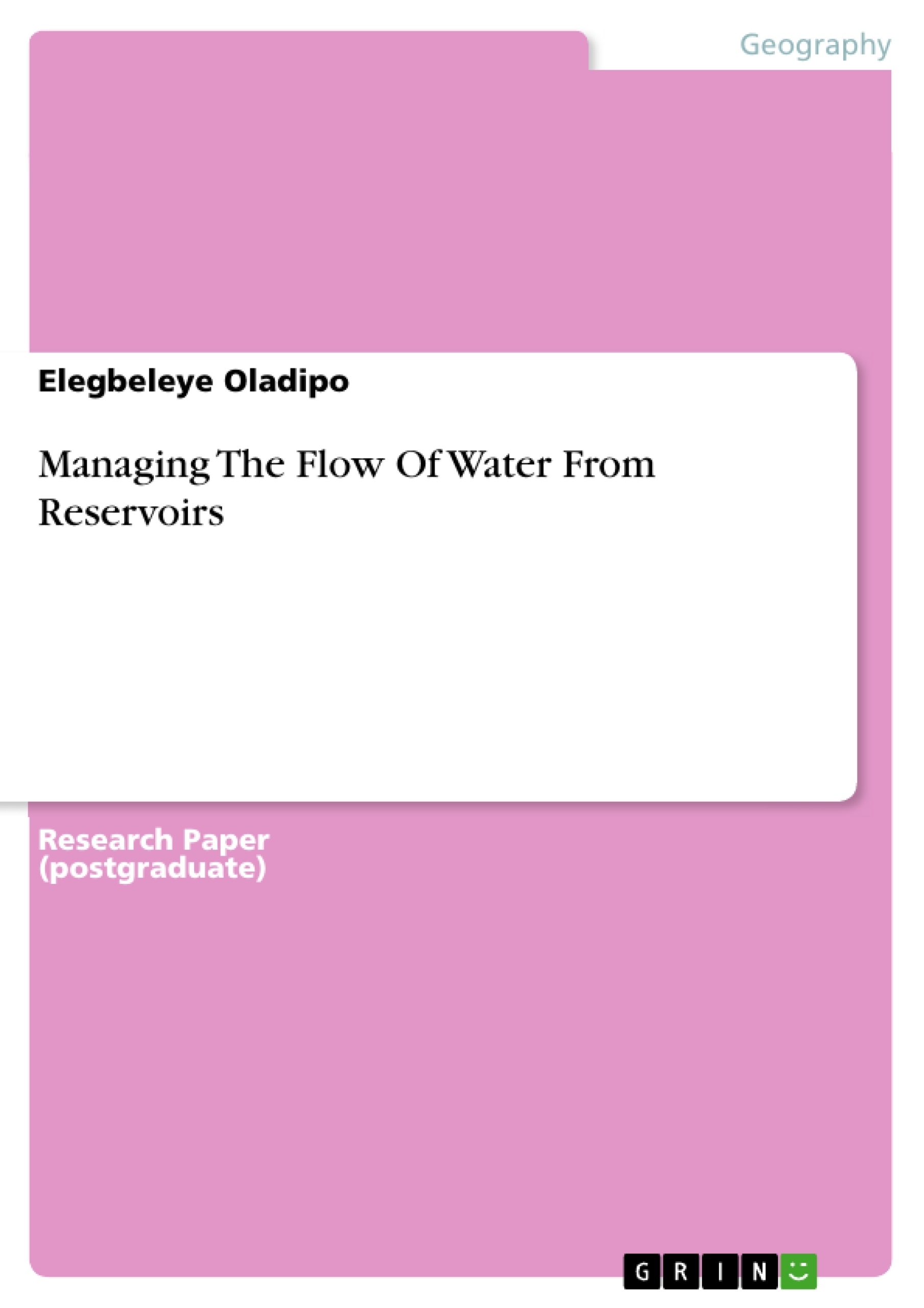Reservoirs have been since the earliest civilisation, being part of man kind strategy for survival. These water storage facilities have been created since time immemorial mainly by constructing dams accross rivers and are intended both for capturing water that would otherwise proceed down river towards the oceans or lakes as well as for storing the water for as long as possible, till when needed and used.
Sediments which is naturaly released from the catchment areas into the reservoir via contributing stream is impeded by the water bodies in the reservoir which are retained by the dams and to a large extent the sediments is permanently trapped there in. This paper talks about managing the flow of reservoirs and regulated river or dam and how to improve its sustainability by balancing the needs of the society, the economy, the environment and the ecosystems. Likewise its environmental goals, its role on a global scale with the laws and regulations guiding it are also discussed in this paper.
Inhaltsverzeichnis (Table of Contents)
- 1 INTRODUCTION
- 1.1 Management Of Reservoirs And Their Environmental Goals..
- 2 EUTROPHICATION...
- 2.1 Estimating Ecosystem Flow Requirements .
- 2.2 The Role Of Water Evaluation In Addressing Global Environmental Flow Requirements (Efrs)......
- 3 MAJOR EFFECTS AND CONSEQUENCES OF BUILDING LARGE DAMS AND RESERVOIRS.
- 3.1 Laws And Regulations For Reserviors
- 3.2 How Reservoirs Are Controlled Or Regulated .....
- 4 DESILTING RESERVOIRS
- 4.1 Identifying Incompatibilities Between Human And Ecosystem Needs..
- 5 CONCLUSION.
- 6 REFERENCES
- 6.1 Internet Sources
Zielsetzung und Themenschwerpunkte (Objectives and Key Themes)
This paper explores the management of reservoirs and regulated rivers, focusing on improving their sustainability and balancing the needs of society, the economy, the environment, and ecosystems. It delves into the environmental goals of reservoir management, its global impact, and the relevant laws and regulations.
- Sustainable management of reservoirs and regulated rivers
- Balancing societal, economic, and environmental needs
- Environmental impacts of reservoirs on ecosystems
- Global scale of reservoir management and its legal framework
- Challenges and opportunities for achieving sustainable water utilization
Zusammenfassung der Kapitel (Chapter Summaries)
The introductory chapter outlines the significance of water management in a world facing growing water scarcity. It introduces reservoirs as crucial components of water resource management, highlighting their role in controlling water flow and providing storage for various purposes. It also discusses the environmental impacts of reservoirs, such as sedimentation and disruptions to natural flow patterns.
Chapter 2 delves into the concept of eutrophication, a process where excessive nutrients in a water body lead to increased plant growth and oxygen depletion. It discusses the estimation of ecosystem flow requirements and the role of water evaluation in addressing global environmental flow needs.
Chapter 3 examines the major effects and consequences of constructing large dams and reservoirs. It covers the legal and regulatory framework governing reservoirs and explores how reservoirs are controlled and regulated to manage water flow and minimize environmental harm.
Chapter 4 focuses on desilting reservoirs, a crucial aspect of maintaining their capacity and extending their lifespan. It highlights the importance of identifying incompatibilities between human and ecosystem needs to achieve sustainable reservoir management.
Schlüsselwörter (Keywords)
This paper focuses on the key concepts of dams, ecology, flow, reservoirs, and water management. It explores the environmental impacts of reservoir construction and operation, including eutrophication, sedimentation, and flow regime alterations. The paper emphasizes the importance of achieving sustainable water utilization by balancing the needs of society, the economy, and the environment.
- Citation du texte
- Elegbeleye Oladipo (Auteur), 2016, Managing The Flow Of Water From Reservoirs, Munich, GRIN Verlag, https://www.grin.com/document/313731



